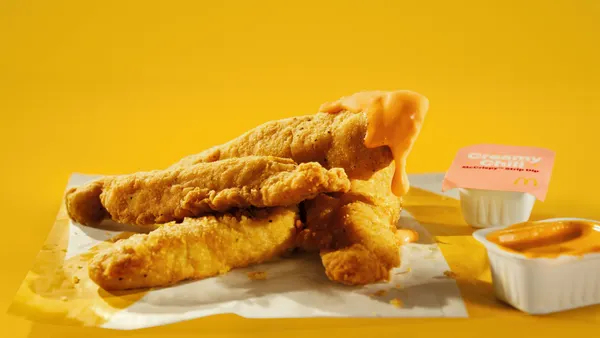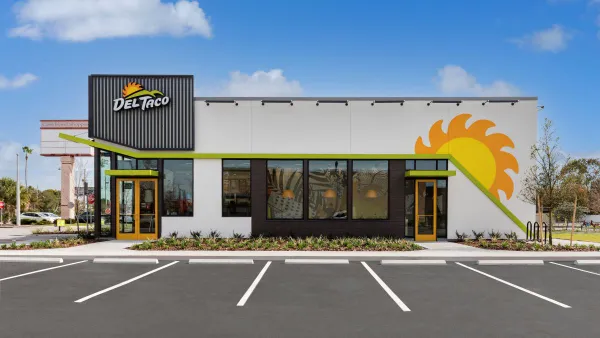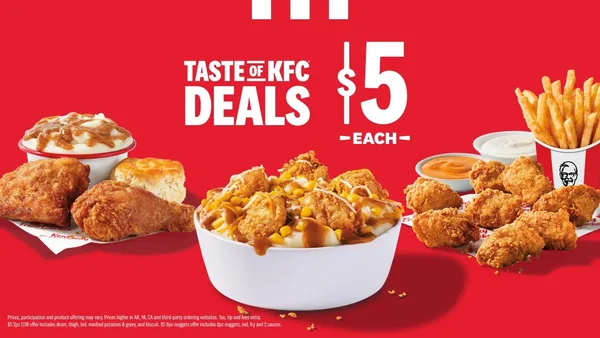- Sales transactions, from dine-in to delivery to drive-through, are affected by the weather every day. Soaring temperatures, rainy days, icy roads, and other external conditions directly impact the number of people that will come through the doors or order through an app. The weather also influences customers' food and beverage choices.
- Restaurants can boost sales by taking advantage of favorable weather periods and manage costs when unfavorable conditions reduce demand. Data-driven visibility into the weather's impact allows operators to more effectively target digital marketing, better align staffing with demand levels, and adjust food orders to ensure availability while managing perishable waste costs.
- Companies need demand analytics, not just weather forecasts, to understand and consistently address a constant driver of sales volatility. Translating temperature readings and precipitation amounts into business metrics (e.g. percent/revenue/volume changes) makes it possible for companies to successfully incorporate weather impacts into existing processes, technology solutions, and reports.
It's Monday morning and management is wondering why sales were so sluggish in the Northeast when performance was noticeably stronger in other regions. In another meeting, the marketing team is having trouble figuring out the effectiveness of a digital campaign with return on advertising spend (ROAS) varying wildly depending on the market or the week. And, on an investor call, an analyst is asking for the reasons why results did not match up with previously provided comp sales guidance.
There's a very good chance the common thread running through all of these situations is an everyday factor that is too often overlooked or misunderstood – the weather. Each day, consumers make decisions on what activities to pursue, whether to venture out or stay home, and what to spend money on based on the conditions outside.
While it is true that there are many external drivers a business faces – the economy, consumer confidence, and of course, something as impactful as COVID-19 – these large-scale underlying factors tend to develop over time and evolve slowly. Weather is different. In fact, no other external factor changes consumer demand as frequently, immediately, and meaningfully as the weather.
The good news is that with the right analytics, the weather's impacts can be measured and managed by restaurant chains. Weather-driven demand analytics isolate how much the weather impacts sales, from a total business perspective down to specific channels (e.g. food delivery vs. dine-in, etc.) and even down to the item-level (e.g. soups vs. salads, etc.). In our experience working with leading chains, these are the weather analytics that are most commonly leveraged by restaurants:
1. Evaluating performance from a weather-adjusted perspective
The weather influences consumer spending on a daily basis. Therefore, any consumer-based business, including restaurants, really needs to quantify the positive and negative impacts of weather to clearly understand performance.
Using analytics to measure the weather's impact in a consistent and systematic manner enables "apples to apples" comparisons. For example, if unadjusted sales are up 5% in Texas and down 3% in Florida, it appears that one market is outperforming the other. However, if Texas was supported by a favorable weather backdrop calculated to be +7% and Florida faced a more negative situation where the weather impact was -10% a completely different conclusion emerges. From a weather-adjusted standpoint, Texas is -2% while Florida is actually +7%.
By removing the weather biases from the results, restaurants can better gauge true performance. Sales results are an obvious place where a "weather neutral" perspective is helpful. In addition, companies will benefit by analyzing other areas by using this same approach. For example, why did a promotion perform well in the first week of the month, but not the second? Why was ROAS on our Facebook ads twice as high in the Midwest as it was in California?
Weather-driven demand analytics put a precise number on how the weather impacted sales or other business metrics, and this allows restaurants to identify exactly how much the weather influenced performance versus other factors.
2. Factor in upcoming weather impacts to support sales and manage costs
Weather-driven demand outlooks that factor in near-term meteorological forecasts help businesses proactively manage upcoming opportunities and risks. For example, knowing that there will be stronger demand for salads in key markets over the next week could encourage a company to increase inventories ahead of the sales spike to maintain sufficient availability and avoid lost sales. On the other hand, negative weather-driven demand projections would allow the company to trim orders and minimize waste costs.
3. Optimize digital marketing spend
Weather-driven demand analytics offer a proven way for businesses to increase digital marketing effectiveness and capture market share by putting a consumer context around the weather. Temperature triggers or other meteorological data points are not as effective because they do not account for important regional, temporal, and buying trends and traits. After all, how a consumer reacts to 68◦ F is far from uniform, as the answer is different in Las Vegas than in Louisville; different if it is March or July or October; and different across various products.
One constant Planalytics has seen in our work with clients is that campaigns that overlap with favorable, weather-induced demand lead to a larger-than-expected sales boost. Restaurants can capitalize on this "synergistic effect" by targeting audiences where the weather is creating demand and a product or service is highly relevant to them at that time. For example, a campaign promoting pasta specials may have historically generated incremental sales of 15%. When weather-driven demand metrics point to an additional 10% boost the company saw a 40% jump in sales. This additional 15% over the expected 25% lift is the synergistic effect of targeting an audience while a weather “tailwind” is also contributing to demand.
4. Improve plans by "deweatherizing" historical sales
The benefit of having a weather-adjusted perspective mentioned as the first common use case above has a related and extremely valuable application in planning. Companies unintentionally build error into the next year's financial or sales plans when the weather volatility that inflated or deflated results are left unadjusted in the forecast baseline. The problem is that they are assuming the weather impacts that occurred in specific markets at specific times of the year will repeat again next year. This rarely happens.
By "deweatherizing" or correcting for positive and negative effects in historical sales, restaurant chains can avoid the trap of "chasing the weather" and the sales impacts that are unlikely to mirror the prior year. This helps companies see when and where opportunities and risks are more likely to arise when planning the year ahead and can inform forward-looking guidance a business gives to investors and stakeholders.
Learn more by visiting Weatherizing a Restaurant Business on the Planalytics' website.










